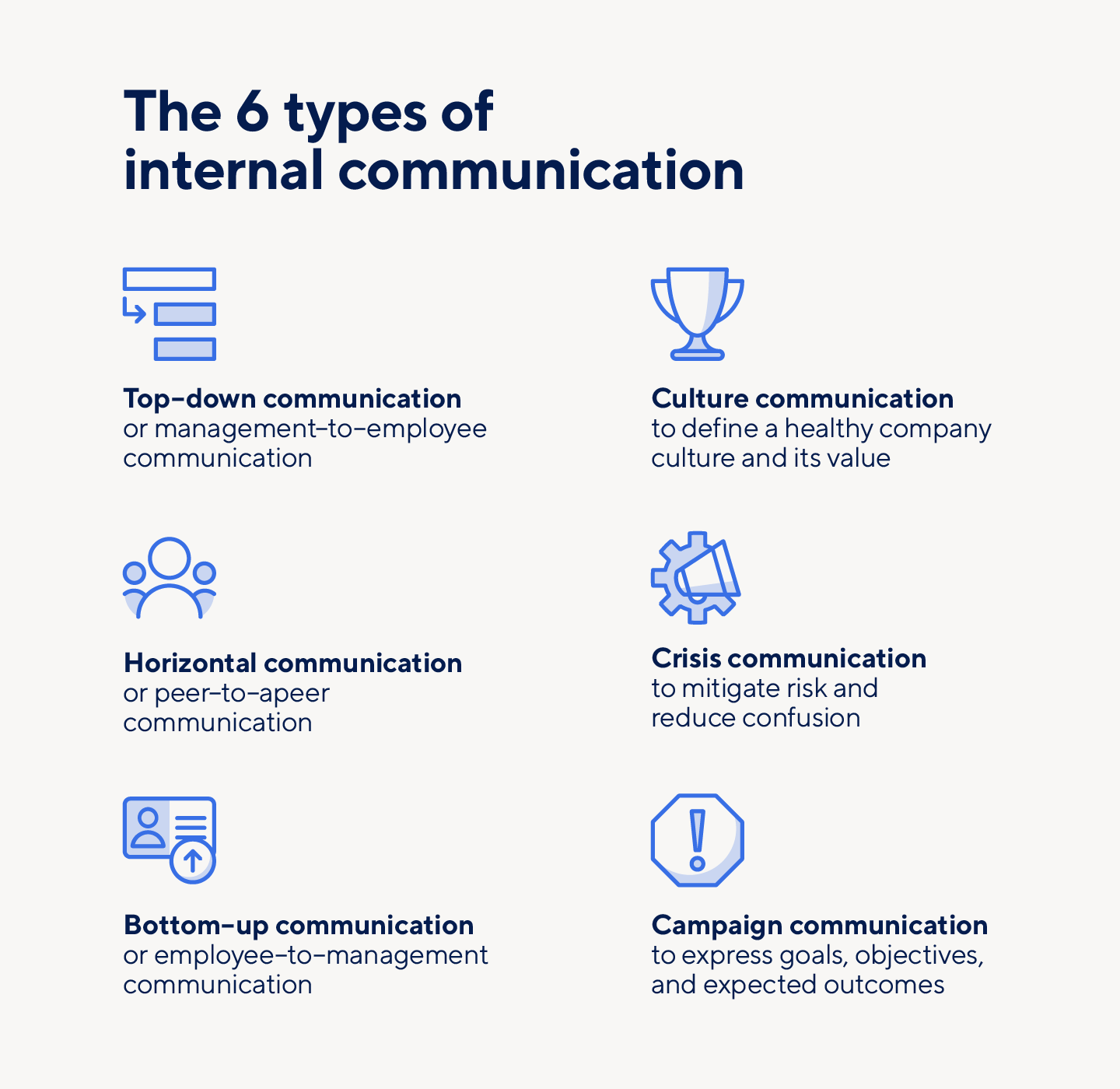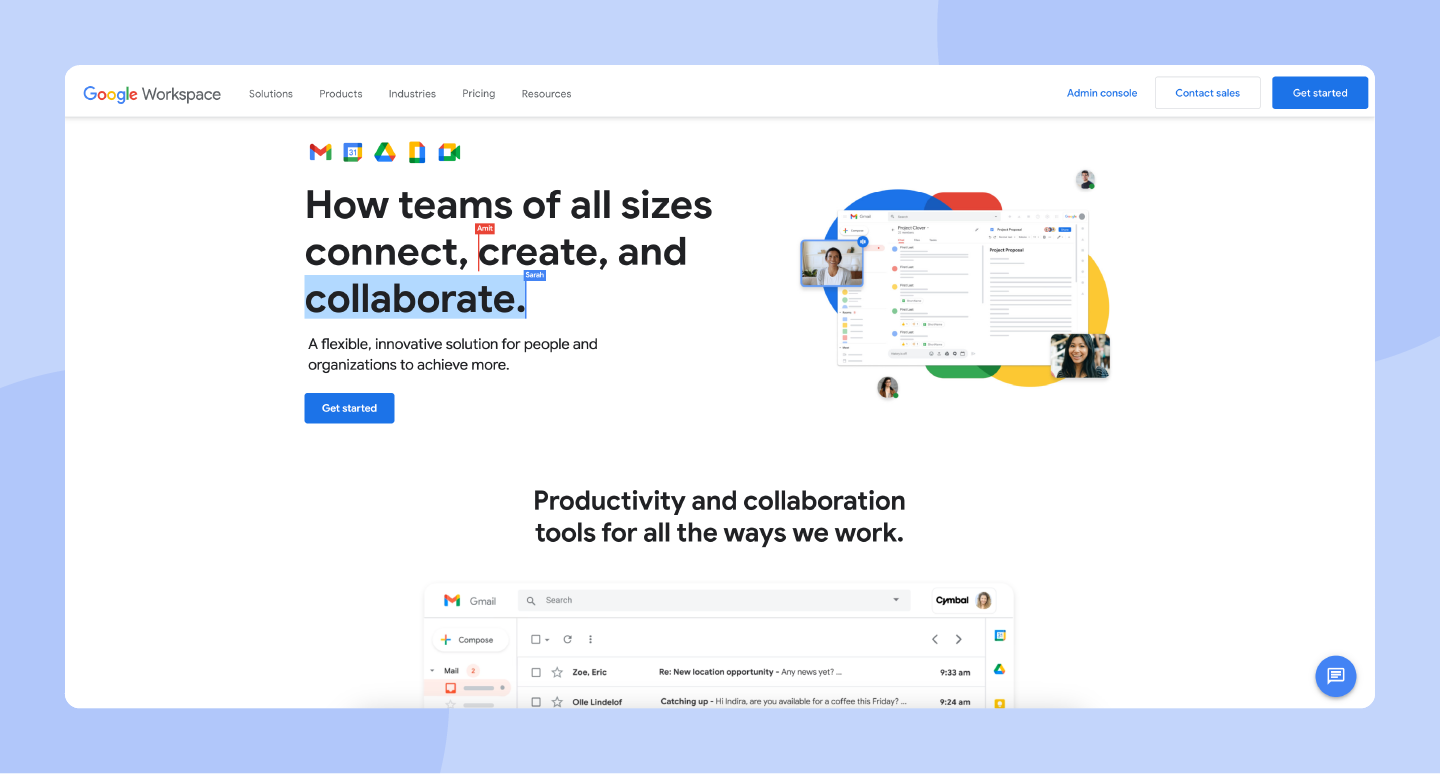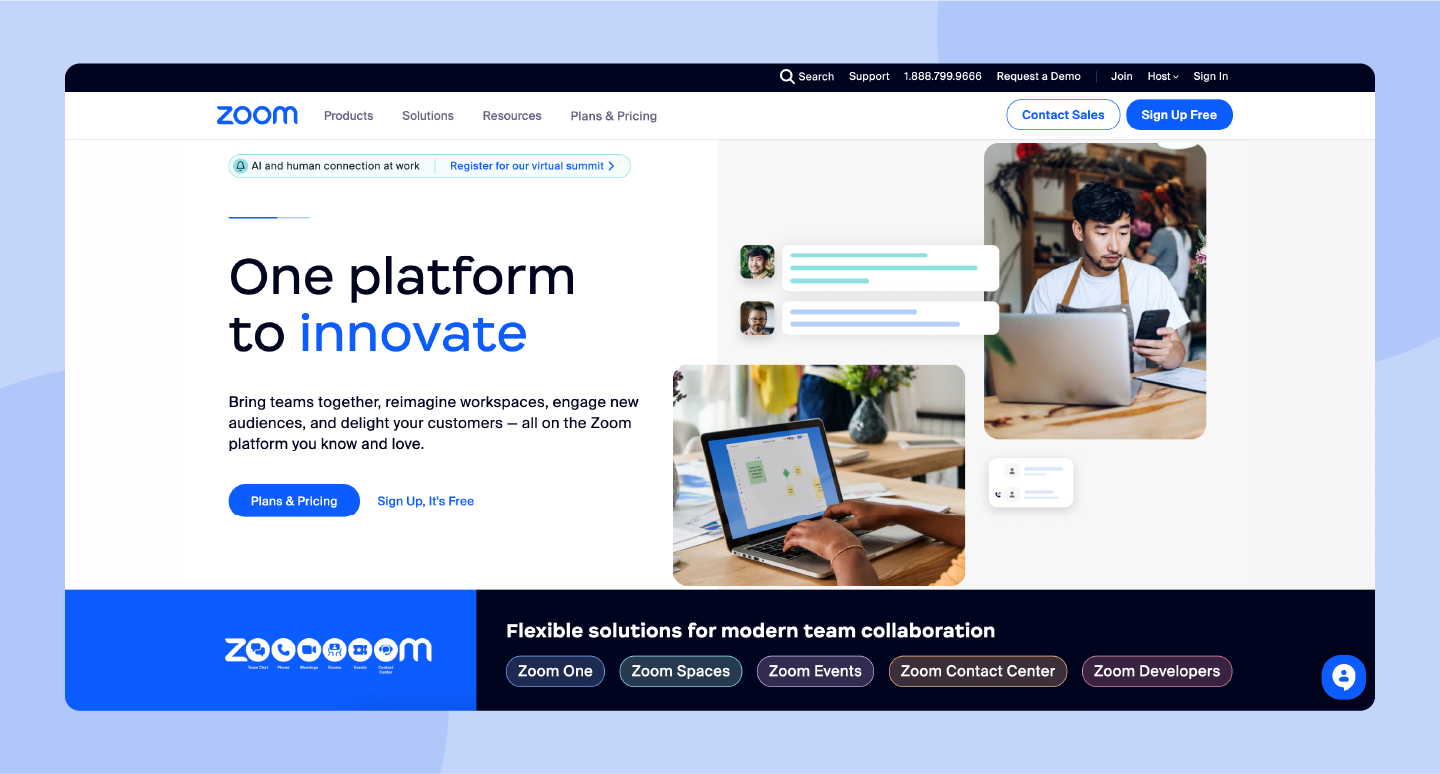What Is Internal Communication?
Internal communication refers to all types of communication between the members of an organization, including management, employees, and other staff. Organizations can use a variety of methods — including email, instant messaging (IM), phone calls, and meetings — to disperse information internally.
Effective internal communication uses efficient information flow processes and team collaboration to direct messages to the correct team members.
Not all internal communication looks the same, and internal communication plan templates can help organizations address their unique needs — from corporate communication to crisis communication.
Internal Communication Trends
As organizations and teams change, so do the ways in which they communicate. Internal communication techniques — like the use of asynchronous communication — are always evolving with popular communication trends.
Here are four key trends to consider:
- AI developments: As artificial intelligence (AI) technologies expand, internal communication must grow and adapt accordingly. In the future, AI may be able to personalize communication experiences, reduce engagement fatigue, and take over delegated tasks in a communication-focused digital world.
- Automation: Not all internal communication needs to happen manually. Automation for communication campaigns, like regularly scheduled pulse surveys and company updates, allows communicators to create and send messages on time no matter where they are.
- Distributed teams: Today, many global teams operate without a central office location. Changing working conditions have led to the need for more — and different — internal communication plans. This method of communication is what can bring teams together despite experiencing different working circumstances and time zones.
- Remote teams: Unlike distributed teams, remote teams may act from a central location or some members of a remote team may be based in the same location. This causes remote team communication strategies to utilize a variety of communication channels intended to simplify the internal communication process for all team members.
Improve Internal Communication: 4 Options
While communication trends can shape internal communication plans on their own, organizations may also choose to invest in communication tools, apps, software, and platforms to improve their internal processes.
Each of the following four options supports an organization’s communication strategies:
- Communication software: Streamlined software systems — including Slack and Zoom — can provide organizations with a simple way to send and receive company-wide communications.
- Communication apps: Applications for smart devices can strengthen communication practices and strategies across entire companies. These can be identical to communication software but are often mobile versions of each system.
- Communication tools: Internal communication tools can help organizations track data, analyze content, and deliver messages efficiently. Common internal communication tools include file-sharing systems and organizational email.
- Communication platforms: Platforms that combine communication capabilities — like email, IM, and campaign management — in one place can simplify internal communication strategies.
Why Is Internal Communication Important?
Internal communication is often referred to as the heartbeat of organizational success, but why is it so important? In short, strong internal communication practices can boost employee engagement, and foster greater productivity and collaboration among teams.
Let’s take a look at the benefits of internal communication in more detail:
- Informed audiences: Relevant audiences quickly receive information about events, policy changes, trainings, upcoming business initiatives, and general company updates.
- Employee engagement: Encouraging two-way communication motivates employees to share opinions, concerns, accomplishments, and general ideas with their coworkers, managers, and other members of the organization.
- Company productivity: When key team members have all the information they need to successfully complete a project — or can easily access individuals with the information they need — organizations are able to produce products and reach goals efficiently.
- Team collaboration: Open lines of communication encourage team and workplace collaboration across all areas of an organization.
- Company culture: Open, honest internal communication creates a foundation and sets expectations concerning company culture. An organization’s tone and messaging help employees quickly identify its goals, mission, and values.
- Information supply: Companies can’t encourage collaboration, engagement, and productivity without a straightforward, established information chain for everything from all-company updates and team communications to one-on-one connections.
- Goals and objectives: Company strategies for SMART goals and objectives — including new or changing goals and objectives — can be quickly communicated to relevant parties.
- Task prioritization: Clear communication helps teams stay on task, know which projects and proposals to prioritize, and understand how to pivot when necessary.
- Crisis management: Crisis management plans provide guidance during times of restructuring — especially when teams change or companies acquire other brands. In the face of layoffs or business setbacks, clear and concise internal communication helps get in front of misinterpretation or undue stress among employees.
- Feedback channels: Organizations with a variety of internal communication channels are able to create specific areas for organizational feedback, which allow employees to anonymously communicate grievances, concerns, and other observations to the correct teams.
Internal Communication Channels
Successful team communication does not look the same within every organization. However, effectively utilizing verbal, written, and electronic channels leads to efficient internal communication strategies.
Here are key factors to consider when planning how to best use these channels:
- Verbal: Face-to-face, video, or phone conversations are best for those looking for quick, direct communication — both individually and in group settings.
- Written: Informational communication, less pressing questions, and other types of long-form messages can occur via written communication, such as mailed documents.
- Electronic: Electronic communication connects team members across departments and time zones, which supports an organization’s day-to-day operations. All-company emails and instant messages are examples of electronic internal communication.
Top Internal Communication Tools
For organizations looking to improve internal communication through electronic channels, there are a few high-quality digital tools to choose from.
Smartsheet
With a dynamic approach to internal communication and planning, Smartsheet is an impressive project management and collaboration tool that can maximize an organization’s success.
As a collaborative work management platform, Smartsheet helps organizations efficiently monitor workflows and communicate project goals, setbacks, and successes. Smartsheet is also known for its integration opportunities — notably with other internal communication tools like Slack and Google Workspace.
Slack
If real-time communication is an organization’s priority, Slack is a great tool. With more than 20 million active users in over 150 countries, Slack is transforming the digital work ecosystem — one device at a time.
Organizations can create topic-specific channels within their internal platform to keep communication organized and relevant information easy to access. Plus, Slack users can integrate online applications into their systems to help streamline communication between various audiences.
Google Workspace
Google is more than the world’s most popular search engine — it’s also one of the best platforms for internal communication. The search engine’s collaboration tools include email, chat, video conferencing, document sharing, and more.
Projects, proposals, and brainstorms live together in one place with Google Workspace, making it easy for teams to collaborate on both old and new projects. Additionally, Google Workspace can support companies of all sizes — from small businesses to enterprise organizations.
Zoom
A trusted communication and collaboration platform, Zoom connects teams across the globe, across time zones — or just across the room. Whether an organization works with remote and dispersed teams or needs to plan for cross-department meetings, Zoom can help.
As Zoom continues to grow, its internal communication offerings improve, with new opportunities for connection like virtual working spaces, online whiteboards, and team chats.
Internal Communication Plan: 8 Best Practices
Whether your organization uses a communication plan template or builds its strategy from scratch, a successful internal communication plan depends on its unique channels, messaging, and goals.
Here are eight best practices for developing an internal communication plan:
- Analyze the current situation: Businesses should analyze their current communication situation to identify strengths, weaknesses, and opportunities for improvement.
- Define goals: Leaders should identify their goals for an internal communication plan and prioritize them during the planning process.
- Identify KPIs: After setting goals, organizations should determine how they want to track their successes and determine which key performance indicators to monitor.
- Identify audiences: Organizations should identify target audiences — both groups and individuals. These audiences can then be segmented by predetermined factors or traits to strengthen the type of internal communication each audience receives.
- Outline the message: Identifying important messages, phrases, and tones creates cohesive messaging for all audiences.
- Specify channels and methods of communication: Determining which communication channels work best for each audience increases the effectiveness of an internal communication plan.
- Create a calendar: Scheduling regular meetings and company events sets clear internal communication expectations for all members of an organization.
- Optimize your plan: Relevant team members should receive updates as soon as possible. Organizations should optimize how departments exchange information and identify communications leaders who can accomplish specific internal strategies.
Streamline Internal Communication With Real-Time Work Management in Smartsheet
Empower your people to go above and beyond with a flexible platform designed to match the needs of your team — and adapt as those needs change.
The Smartsheet platform makes it easy to plan, capture, manage, and report on work from anywhere, helping your team be more effective and get more done. Report on key metrics and get real-time visibility into work as it happens with roll-up reports, dashboards, and automated workflows built to keep your team connected and informed.
When teams have clarity into the work getting done, there’s no telling how much more they can accomplish in the same amount of time. Try Smartsheet for free, today.






